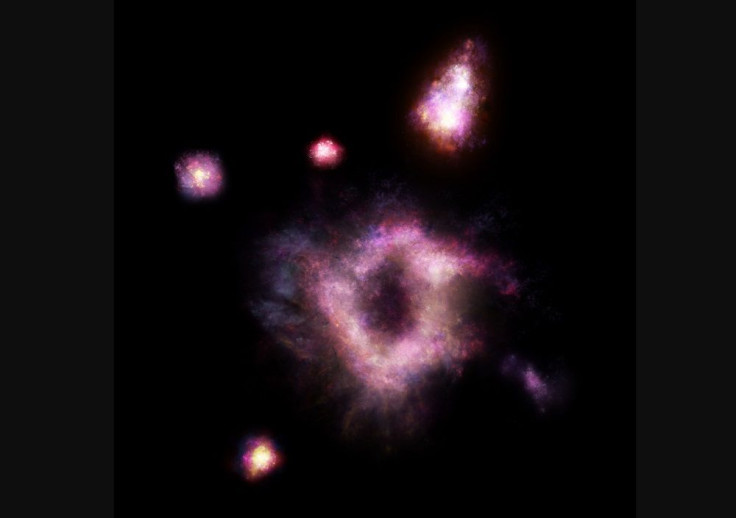Super Rare Ring Of Fire Galaxy From Early Universe Challenges Galaxy Formation Models
KEY POINTS
- Astronomers discovered a very rare collisional ring galaxy from the early Universe
- It was formed via a violent collision with another galaxy
- The discovery could change the understanding of how structures form in the Universe
Astronomers recently observed a "cosmic ring of fire" galaxy from the early years of the universe, which could help reshape the understanding of how structures in the Universe form.
Using data from the WM Keck Observatory in Hawaii as well as images from NASA's Hubble Space Telescope, an international team of researchers observed a super rare galaxy that looks rather like a donut. Described as a "cosmic ring of fire", because most of the activity in the galaxy is on its surrounding ring, R5519 is about the size of the Milky Way but is circular in shape with a massive hole in the middle.

According to the astronomers, the hole in the middle is about 17,612 lightyears across, which is about three million times bigger than the supermassive black hole at the center of galaxy Messier 87.
"It is a very curious object that we've never seen before," lead researcher Dr Tiantian Yuan of Australia's ARC Centre of Excellence for All Sky Astrophysics in 3 Dimensions (ASTRO 3D) said in a news release. "It looks strange and familiar at the same time."
R5519 is located about 11 billion lightyears away, which means it exists in the early years of the Universe, specifically just three billion years after the Big Bang. With the evidence suggesting R5519 is a collisional ring galaxy, it is the very first of the kind to be detected in the early Universe. In fact, according to Science Alert, it is the first collisional galaxy found to be more than several hundred lightyears away.
Collisional ring galaxies form as a result of violent encounters with other galaxies. This is in contrast with the other type of ring galaxies, which form due to internal processes. Galaxies like R5519 are said to be a thousand times rarer than the other type.
Apart from its unique and rare appearance, however, R5519 could help astronomers better understand how galaxies form.
According to study co-author Professor Kenneth Freeman, a thin disk has to be formed in the "victim" galaxy before the collision that creates ring galaxies such as R5519. What's interesting is that thin disk galaxies were not thought to have formed in the early Universe, with most galaxies at the time believed to be still quite disorderly.
This means the ring galaxy R5519 formed at a time when the disk galaxy was not believed to have existed yet.
"In the case of this ring galaxy, we are looking back into the early universe by 11 billion years, into a time when thin disks were only just assembling. For comparison, the thin disk of our Milky Way began to come together only about nine billion years ago," Freeman explained. "This discovery is an indication that disk assembly in spiral galaxies occurred over a more extended period than previously thought."
Recently, astronomers announced the discovery of the spinning disk "Wolfe Galaxy" from 12.5 billion lightyears away. It, too, was said to have formed during the early Universe at a time when spinning disk galaxies were thought to be impossible.
Together, these discoveries could reshape humans' current understanding of how structures form in the Universe. The current study is published in the journal Nature Astronomy.
© Copyright IBTimes 2024. All rights reserved.






















